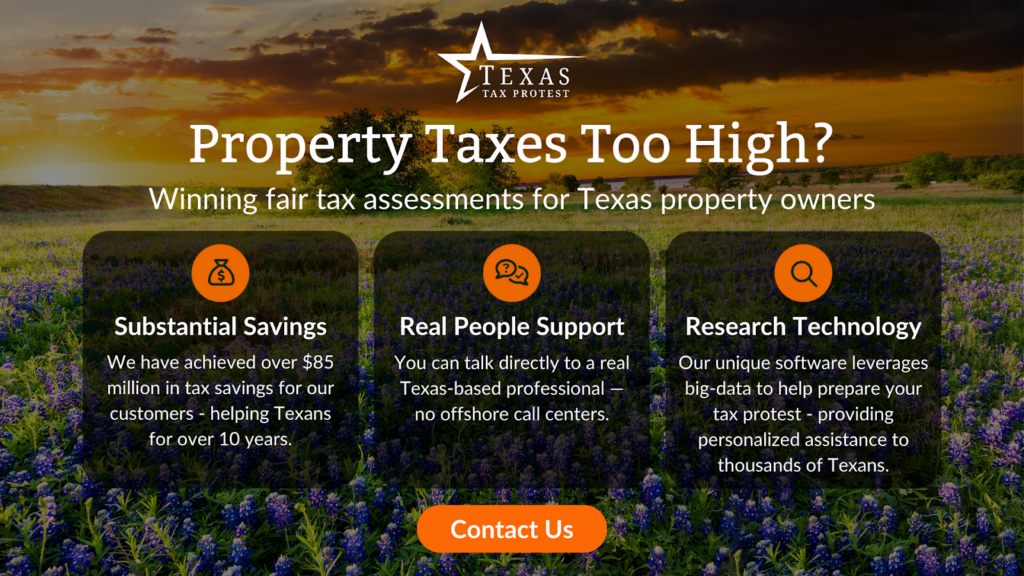
Property Tax Rates by City in Texas
April 12, 2025
Key Takeaways:
- Texas Property Tax Rates by City: Property tax rates can shift dramatically depending on location. McAllen nears the top of the charts at over 2.5%, while Aubrey offers a lower rate near 1.96%. That difference can add up fast for homeowners and property investors.
- Where Your Property Taxes Go: Roughly 60% of your tax bill helps fund public schools. The rest supports local essentials like law enforcement, road maintenance, emergency services, and libraries.
- How to Take Control of High Property Taxes: Reviewing your valuation, claiming exemptions, and filing a formal protest can all help lower your annual bill.
The Lone Star State has some of the highest property tax rates in the country, but what you pay depends heavily on your zip code. For homeowners, that can mean thousands of dollars in difference from one city to the next, often with little explanation. Knowing how your city stacks up and why those rates vary helps you take a more informed approach to managing your property tax bill.
Across Texas, property taxes fund essential services like public schools, road maintenance, and local safety departments. However, when assessed values feel inflated, homeowners can protest.
In this post, we’ll take a look at property tax rates by city in Texas and explain how rates differ. We will also discuss what drives those differences, and how to take steps to reduce your tax burden.

Where Your Texas Property Taxes Actually Go
Property tax bills in Texas can feel steep, but those dollars serve an essential purpose. They fund the day-to-day operations of your local community, from school systems to road repairs. Learning how these payments are divided gives you a clearer picture of what you’re supporting and why your rate might look different from someone just a few cities over.
Public Schools Receive the Largest Share
In most areas, around 60% of property tax payments go toward funding public schools. That money helps pay for teacher salaries, classroom supplies, extracurricular programs, and campus maintenance. This investment plays a central role in supporting education across the state and shaping the future of local communities.
Local Governments and Services Use the Rest
The remaining 40% is typically distributed across other local entities, including county governments, city administrations, and special districts. These funds support essential services such as road maintenance, law enforcement, fire departments, and public libraries. While the exact allocation depends on your location, these services rely on consistent funding to operate effectively.
Allocation Can Vary By Location
Each city and county in Texas has different needs and budget priorities. While the overall structure is similar statewide, specific percentages and funding categories may shift depending on local infrastructure, population growth, and economic factors. Understanding your local breakdown can help you better evaluate how your tax dollars are spent – and whether your assessment feels justified.
Cities with the Highest Property Taxes in Texas
Some cities in Texas consistently rank at the top for property tax rates, often due to a mix of funding needs and lower average home values. Here are five cities with the highest property taxes in Texas:
- El Paso: El Paso has property tax rates around 2.6%. The city’s unique position along the border influences its tax structure, requiring higher rates to fund essential services.
- McAllen: McAllen isn’t far behind with a tax rate that often exceeds 2.3%. The city’s high rate is driven by local government needs and the area’s relatively lower property values.
- Pearland: At about 2.2%, Pearland’s rates reflect the challenges of funding city services in a growing region. The city’s efforts to improve the quality of life for residents drive these higher rates.
- Beaumont: Within the top effective tax rates, Beaumont’s property tax rate is around 2.1%. The city’s rates are influenced by its industrial base and the costs of maintaining a robust local economy.
- San Antonio: The property tax rate hovers around 2.03%. The city’s bustling trade environment and growing population contribute to the need for higher taxes to support infrastructure and public services.
Cities with the Lowest Property Taxes in Texas
While some cities in Texas carry steep tax rates, others offer homeowners and commercial property owners a more budget-friendly break. These are some cities with the lowest property taxes in Texas that stand out, giving residents more breathing room when it comes time to pay the bill.
- Celina, Texas: On the list, Celina offers a property tax rate of approximately 1.7%. Also, in the Dallas-Fort Worth area it’s celebrated for its small-town vibe and affordable tax structure.
- Anna, Texas: North of Dallas, Anna boasts a rate of roughly 1.6%. This fast-growing suburb pairs new housing developments with a tax environment that is easy on the wallet.
- Aubrey, Texas: With a combined property tax rate of approximately 1.4%, Aubrey offers a compelling option for those seeking lower tax bills. Nestled north of Dallas, this small city blends rural charm with tax-friendly living.
- Cedar Hill, Texas: Just south of the Dallas-Fort Worth metroplex, Cedar Hill features a property tax rate of about 1.2%. It’s ideal for those craving urban proximity without sky-high taxes.
- Fairfield, Texas: With a tax rate of around 1.1%, Fairfield is another budget-friendly choice for property owners. Positioned between Dallas and Houston, it offers a quiet retreat with a modest tax rate.
Tips for Managing High Property Tax Rates
High property tax rates can add up quickly, but there are steps you can take to protect your wallet. These strategies can help you better manage your property valuation and reduce your overall tax burden:
- Review How Your Property Was Assessed: Property tax assessments are based on comparable sales. Assessors apply mathematical adjustments for factors like square footage, upgrades, lot size, and location. For example, a newer roof, finished basement, or extra acreage could raise your valuation, so review the comps carefully and be ready to question inaccuracies.
- Take Advantage of Available Exemptions: Texas offers exemptions that reduce the taxable value of your home. Standard options include homestead exemptions, over-65 exemptions, veteran exemptions, and disability exemptions. Filing for the exemptions you qualify for can result in noticeable tax savings each year.
- Track Local Rate Changes and Policy Updates: Property tax rates vary by city and may change annually based on local budgets and legislation. Keeping up with rate changes, local tax news, and county notices allows you to anticipate increases and prepare a protest if needed.

Exemptions That Can Lower Your Property Taxes
Several property tax exemptions are available to Texas homeowners, but eligibility depends on your circumstances. Filing the correct exemption can significantly reduce your taxable value and lead to long-term savings. Below are key exemptions to consider if you meet the qualifications.
Homestead Exemption
Homeowners who occupy their property as a primary residence may qualify for a homestead exemption. This exemption can reduce the taxable value of your home for School Taxes by $100,000 or up to 20%, depending on your local taxing entities. To be eligible, you must apply to your county appraisal district and verify that the home is your permanent residence.
Over-65 Exemption
Homeowners aged 65 or older may be eligible for an additional exemption that reduces their property’s taxable value. This exemption also freezes the amount paid in school district taxes, offering long-term relief for seniors. Proof of age and residence is required when applying through your appraisal district.
Disability Exemption
Texas residents with qualifying disabilities may apply for an exemption that lowers their taxable value. However, depending on the type and severity of the disability, individuals may be eligible for a 100% exemption. Applicants must meet specific eligibility requirements and provide supporting documentation.
Veteran’s Exemption
Disabled veterans, their surviving spouses, and sure military survivors may qualify for partial or full exemptions based on service-related disability ratings. Eligibility is determined by the disability percentage, with additional considerations for veterans who are fully disabled or receive 100% disability compensation due to unemployability.
Agricultural and Wildlife Management Exemptions
Landowners who use their property for qualifying agricultural activities or wildlife management may be eligible for specialized exemptions that reduce the appraised value of their land. These exemptions are not based on market value but on the land’s productive capacity. Eligibility depends on the primary use of the land, compliance with local appraisal district requirements, and consistent use over a qualifying period, typically five out of the past seven years.
How to Protest Your Property Taxes
Filing a property tax protest in Texas might initially seem intimidating, but the process becomes more manageable once you know what to expect. With the proper preparation and team, you can challenge an inflated valuation and potentially lower your tax burden. Here’s how it works from start to finish.
Start by Reviewing Your Property Tax Assessment
The first step involves examining your current tax statement. Look at your property’s assessed value and compare it to recent values of similar homes in your area. If your property appears to be valued significantly higher than comparable homes, that could be a strong basis for a protest.
Research Comparable Properties and Apply Adjustments
Effective protests are built on solid comparisons. Properties known as “comps” should match yours in square footage, lot size, age, location, and condition. However, comparisons aren’t exact, so adjustments must account for features like remodeling, new roofing, or added acreage.
File Your Protest Before the Deadline
In Texas, the deadline to file a protest typically falls on May 15. You can submit your protest online, by mail, or in person at your local appraisal district office. Your protest must clearly explain why the valuation is inaccurate and include any research or comps you’ve gathered.
Prepare for the Appraisal Review Board Hearing
If the appraisal district does not adjust after reviewing your protest, the next step is a formal hearing. At this point, it’s essential to have your documentation in order. A well-organized set of comps and a clear explanation of why your valuation should be adjusted can influence the board’s decision. Texas Tax Protest prepares all necessary materials for the hearing so you don’t have to.
Understand What Happens After the Decision
Once the hearing concludes, you will receive a decision from the board. If the outcome is unfavorable, there are still options to escalate your protest. You may appeal through the State Office of Administrative Hearings or take the case to the district court. Texas Tax Protest can help you evaluate whether moving forward makes sense based on your case and available evidence.

Final Thoughts
Knowing how your city compares is only part of the equation. What matters next is having a partner who can help you take action. At Texas Tax Protest, we bring years of experience, proven strategies, and a deep understanding of Texas property tax law to every case we handle.
We don’t just follow the numbers – we interpret them. Our team evaluates your valuation, researches comparable properties, and speaks on your behalf during the protest process. Advanced analysis works hand in hand with personal service to deliver meaningful support at every stage. If you’re ready to challenge your property tax assessment, reach out today to get started. Want more interesting content that compares property tax rates by city in Texas? Check out our blog page or read more below.
Read more:
- How to Protest Your Property Taxes in Texas and Actually Win
- Appeal Strategies That Minimize Your Property Taxes
- The Most Effective Ways to Lower Your Property Taxes in Texas
Frequently Asked Questions About Texas Property Tax Rates by City
Are property taxes in Texas cities deductible from federal taxes?
Yes, you can deduct property taxes on your federal tax return, but there are limits. The Tax Cuts and Jobs Act caps the total deduction for state and local taxes, including property taxes, at $10,000 annually.
What factors determine property tax rates in Texas cities?
Several factors, including local budgets, school district funding needs, and city services, influence property tax rates in Texas cities. But here’s the thing: it’s not just about the rate. The assessed value of your property plays a huge role, too.
Can you appeal property tax rates in Texas cities?
Absolutely! You can appeal your property tax assessment in Texas at the County level. The process can seem daunting, but that’s where Texas Tax Protest comes in. We simplify the protest process, guiding you through every step to challenge your assessment and aim for a lower taxable value. Remember, it’s all about strategy and advocacy, and we’re here to help you every step of the way.
What is the average property tax rate across Texas cities?
The average property tax rate across Texas cities can fluctuate, typically around 1.8% to 2.0% of a property’s assessed value. However, this is just an average, and your specific rate can vary based on your location and other factors.
Is there a cap on how much property tax can increase annually in Texas cities?
Texas has no statewide cap on how much your property taxes can increase annually. However, some cities and counties have implemented their own homestead exemption benefits that can reduce your assessment and lower your tax bill.
How often are property values reassessed in Texas?
In Texas, property values are typically reassessed annually. This means every year, you might see changes in your property’s assessed value, which can impact your tax bill.





